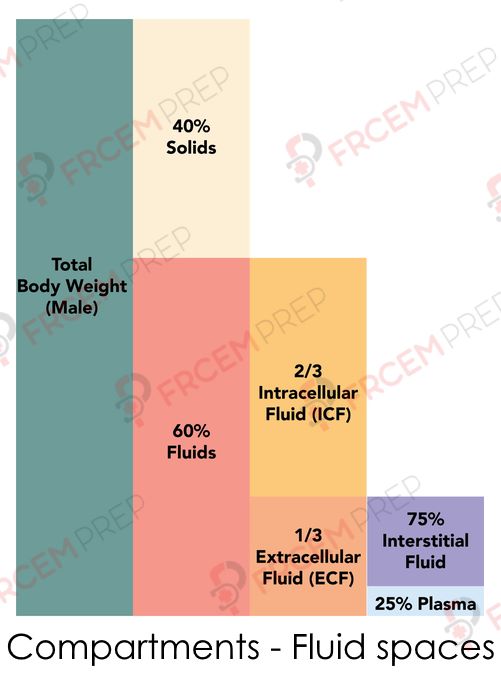Compartments and fluid spaces in health.
Curriculum

Compartments and fluid spaces in human body – Image modified from – By Alan Sved and David Walsh – Own work, CC BY-SA 4.0, https://commons.wikimedia.org/w/index.php?curid=81541888
The body is composed of fluids in major proportion. Fluids constitute about 60% in Males and 55% in females.
Out of the fluid, 2/3rds of fluid is located within the cell – Intracellular compartment.
Rest of 1/3rd is located outside of cells – Extracellular compartment.
Of the extracellular fluid, 1/4th (25%) is the Plasma within blood vessels and rest of 3/4th (75%) is Interstitial fluid (Any fluid that is not in blood vessels or cells).
Semipermeable membrane
The intracellular and extracellular spaces are separated by Semipermeable membrane (Cell covering).
The membrane allows the free passage of water but not solutes (SEMI permeable).
Water moves from low solute concentration areas to high solute concentration till both sides become similar in osmolarity. When the water moves out, the low solute concentration space will have it’s solute concentration increase as the water content reduces. The receiving space which had high solute concentration will get diluted now due to water entry and become less concentrated.
Semipermeable membranes help maintain similar osmolarity on intra and extra cellular spaces this way.
The solute movements will depend on their solubility in lipid layer. Lipophilic (lipid liking / dissolvable) substances can move across the cell membranes but hydrophilic (water solvable / lipophobic) subastances will need some kind of carriers / channels for movement across the layer. (More info in Membrane structure chapter.)